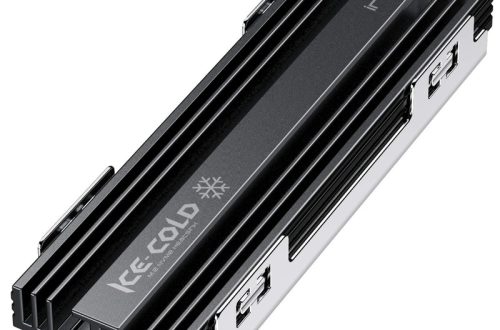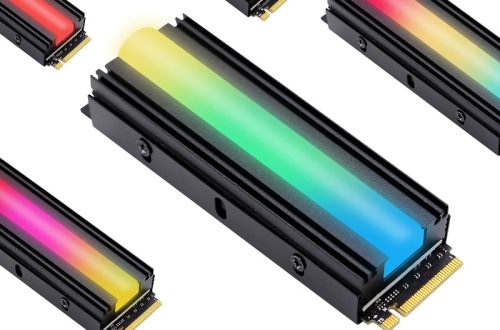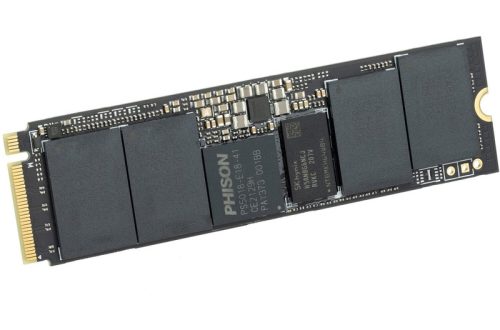What Determines a Normal CPU Temperature?
Determining a ‘normal’ CPU temperature can be challenging. Various factors, such as CPU design, usage, and cooling systems, play a significant role. Generally, average CPU temperatures under load should ideally stay between 70-80 degrees Celsius. However, some CPUs may operate safely at higher temperatures, even near 100 degrees Celsius. It’s essential to refer to manufacturer specifications for the maximum safe operating temperature of your CPU.
Factors Influencing CPU Thermal Performance
CPU thermal performance is influenced by various elements:
- CPU Architecture and Design: Different CPUs manage heat differently, based on design and efficiency.
- Clock Speed and Workload: Increased clock speeds and heavy workloads generate more heat.
- Cooling System Quality: Effective cooling systems prevent overheating and ensure optimal performance.
- Thermal Paste Application: Proper application facilitates heat transfer between CPU and heatsink.
- System Configurations: Certain settings, like Intel Turbo Boost, can raise temperatures.
Effects of Environmental Conditions on CPU Temperature
Environmental conditions can significantly affect CPU temperatures. Some notable factors include:
- Ambient Room Temperature: High room temperatures can increase CPU heat.
- Computer Placement: Placement on a carpet or in an enclosed space can restrict airflow.
- Airflow in Case: Good case design and unobstructed airflow paths help maintain lower temperatures.
- System Maintenance: Dust buildup and aging thermal paste can impede heat dissipation.
- External Climate: PCs in hotter climates or direct sunlight may experience higher temperatures.

The Impact of High CPU Temperatures
High CPU temperatures can have adverse effects on computer performance and hardware health. As the temperature rises, CPUs may reach a point where they begin to thermal throttle. Thermal throttling is a safety mechanism that reduces the processor’s clock speed to prevent damage from overheating. While this helps prevent immediate harm, consistently operating at high temperatures can lead to permanent damage, impacting the CPU’s longevity and performance.
Risks of Thermal Throttling in CPUs
The risks of thermal throttling include:
- Reduced Performance: High temperatures cause the CPU to slow down, affecting computing speed.
- System Instability: Throttling can lead to unexpected behavior or system crashes.
- Data Loss: In extreme cases, overheating can cause data corruption or loss.
- Component Stress: Other system components can suffer from the increased heat, reducing their lifespan.
Exceeding the ‘normal’ temperature range for prolonged periods can trigger these issues. To prevent these problems, monitoring CPU temperatures and ensuring adequate cooling is crucial.
Longevity and Performance Issues
Operating at high temperatures not only affects immediate performance but also CPU longevity. Prolonged exposure to heat can cause:
- Wear and Tear: Higher temperatures accelerate the deterioration of electronic components.
- Reduced Efficiency: Over time, the CPU may consume more power for the same tasks.
- Hardware Failure: Persistent overheating can lead to irreversible damage, requiring costly repairs or replacements.
Ensuring your CPU operates within a safe temperature range is key for maintaining optimal performance and extending the lifespan of your system. Next, we’ll explore cooling solutions that can help manage CPU temperatures effectively.
Cooling Solutions for Efficient Thermal Management
To keep your CPU within a safe temperature range, efficient thermal management is vital. There are two main types of cooling systems: air and liquid. Each system has its benefits and fits different use scenarios.
Types of Cooling Systems: Air vs. Liquid
Air cooling systems are common and budget-friendly. They include heat sinks and fans that push hot air away from the CPU. These are great for everyday use and mild to moderate computing tasks. Liquid cooling systems use water or coolant to absorb heat. Tubes circulate the liquid to a radiator, where fans expel the heat. Liquid cooling is more effective for intense computing. It often runs quieter and handles high temperatures from gaming or video editing.
Importance of Thermal Paste and Proper Heatsink Installation
Applying thermal paste is essential in creating a good thermal bond between your CPU and its cooler. This paste fills microscopic gaps, allowing for better heat transfer. Too little paste might not cover the entire CPU surface, while too much can cause poor heat dissipation. Installing the heatsink properly is also critical. It must sit flush against the CPU to ensure maximum thermal transfer. Make sure all mounting hardware is secure and there are no gaps.
DIY Tips to Maintain a Healthy CPU Temperature
Keeping a CPU at ideal temperatures extends its lifespan and ensures stable performance. Users can employ simple DIY tips to maintain a healthy CPU temperature, focusing on regular maintenance and clever case design to enhance airflow.
Regular Maintenance and Cleaning
Regular maintenance is key to any smoothly operating system. Dust and debris can accumulate inside a computer, obstructing airflow and insulating components, which leads to higher temperatures. Follow these steps:
- Dust Off Components: Use compressed air to blow dust off the motherboard, CPU, power supply, and other parts.
- Clean Fans and Heatsinks: Buildup on these parts reduces their efficiency; clean them carefully.
- Reapply Thermal Paste: Over time, thermal paste can dry out. If temperatures rise, consider reapplying paste.
- Check for Obstructions: Make sure there are no cables or other items blocking the airflow inside the case.
Airflow Management in Case Design
The design of your PC case significantly affects the CPU temperature. To manage airflow:
- Use Full Tower Cases: They generally have better airflow due to more space.
- Organize Cables: Tidy cables to avoid disrupting airflow.
- Add or Rearrange Fans: Ensure you have the right number of intake and exhaust fans for optimal airflow.
- Maintain Clearance: Don’t place your PC against a wall or on a carpet. Ensure there’s space around it for air to circulate.
These straightforward DIY steps can help to keep CPU temperatures under control, prevent thermal throttling, and maintain system stability and performance. Regular attention and a well-designed case are cost-effective strategies to avert overheating issues.

When to Upgrade Your Cooling System
Your CPU’s cooling system is critical for its performance and longevity. Knowing when to upgrade is essential. Here’s how you can tell if your cooling solution needs a refresh.
Indicators of Inadequate Cooling
Several signs point to inadequate cooling:
- Frequent Thermal Throttling: If your CPU often slows down under normal load, it might be overheating.
- High Idle Temperatures: Unusually high temperatures when the CPU isn’t working hard are a red flag.
- Loud Fan Noises: Fans working overtime to cool the CPU can create excessive noise.
- System Crashes: Overheating can cause your computer to shut down unexpectedly to prevent damage.
- Age of System: As systems age, their cooling effectiveness can diminish, especially if maintenance has been neglected.
These symptoms suggest it’s time to consider upgrading your cooling setup to ensure your CPU runs at ‘what should cpu temp be’ ideal range. This renovation can forestall performance losses and extend your system’s life.
Choosing the Right Cooling Solution for Your CPU
Selecting a cooling solution depends on multiple factors:
- CPU Model and Heat Output: Check the CPU’s heat generation and match it with a cooler’s capacity.
- Size of Your Case: Ensure the new cooler fits inside your computer case.
- Your Computing Activities: Intense gaming or heavy computational tasks may require advanced cooling.
- Noise Level Preference: If a quiet PC is a priority, consider liquid cooling solutions.
- Budget Constraints: Balance the cost against cooler efficiency and noise levels.
- Ease of Installation: Make sure you’re comfortable with the installation process or have professional help available.
Whether you’re experiencing ‘what should cpu temp be’ difficulties or planning to push your system, prioritizing an adequate cooling system upgrade is a smart move for any user wanting to protect and optimize their CPU’s performance.
Understanding CPU Temperatures in High-Stress Environments
High-stress environments can push CPUs to their thermal limits. Examples include sealed systems in the sun or devices used in data centers. In these cases, temperatures can stay very high for extended periods. This brings unique challenges and requires specialized cooling strategies. Let’s look at how some systems handle extreme heat through case studies.
Handling Extreme Conditions: Case Studies
In field situations, hardware may face temperatures that exceed typical operation range. For instance, there are sealed boxes with computers that operate under direct sunlight. These can reach upwards of 60 degrees Celsius. It may seem unlikely, but some of these systems continue to function without constant overheating. Achieving this involves careful design and possibly heat-resistant components. However, one should note the unusual case of a PC in a freezer having more issues than one in harsh heat. This highlights that extreme cold can also impact CPU performance.
A particular build using an advanced CPU like a 13th Gen Core i9 running at 5.5GHz with 24 cores, reached near 100 degrees Celsius during stress tests with a high-grade cooler. Surprisingly, despite these temperatures, the system ran within the acceptable operational bounds due to modern CPUs’ ability to handle high temperatures.

Precautions for CPUs Operating Near Their Thermal Limits
When CPUs operate close to their max temperatures, it’s crucial to take extra precautions. Here are some tips:
- Monitor Temperatures Regularly: Keep a close eye on the CPU’s thermal readings, especially during intensive tasks.
- Improve System Cooling: Evaluate if your cooling system is adequate. If not, you might need an upgrade.
- Reapply Thermal Paste: Thermal paste can dry out. Reapply it if your CPU’s temperatures are too high.
- Check for Dust and Obstructions: Ensure there is no dust buildup or cable clutter obstructing the airflow.
- Consider Environmental Factors: Placement of the system and room temperature matter. Make adjustments to keep temperatures down.
Following these precautions can help manage CPU temperatures and prevent damage, even in high-stress environments.
Advanced Techniques for Temperature Management
Keeping CPUs within safe temperature limits requires not just good cooling hardware, but also smart management of system settings. Advanced users can apply certain techniques to ensure thermal efficiency while maintaining performance.
Disabling Intel Turbo Boost and Other Performance Settings
One method to control heat is to modify CPU performance settings. For instance, Intel Turbo Boost Technology temporarily increases the speed of a processor beyond its base frequency. This can lead to higher temperatures. Disabling Turbo Boost might keep the CPU cooler at the cost of some performance.
Other settings that might be adjusted include:
- Power Limit Settings: These control the CPU’s power consumption and heat output.
- Voltage Settings: Lowering the CPU voltage reduces power use and heat, albeit at a potential stability cost.
- Clock Speed Settings: Reducing the CPU’s clock speed limits heat generation but slows down performance.
Fine-tuning these settings can lower temperatures while balancing the desired level of performance.
Stress Testing and Monitoring for Thermal Regulation
Stress testing is a way to ensure that your CPU can handle intense loads without overheating. Use benchmarking tools to push your CPU to its limits. Keep an eye on temperature readings to make sure they stay within safe bounds.
Regular monitoring is crucial, especially during heavy use. Tools like HWMonitor or Core Temp provide real-time thermal data. If temperatures rise too high, review your cooling setup and environment.
By applying advanced temperature management techniques, such as disabling performance-enhancing settings and diligent monitoring, you can keep your CPU cool. This can improve both immediate performance and long-term reliability.




